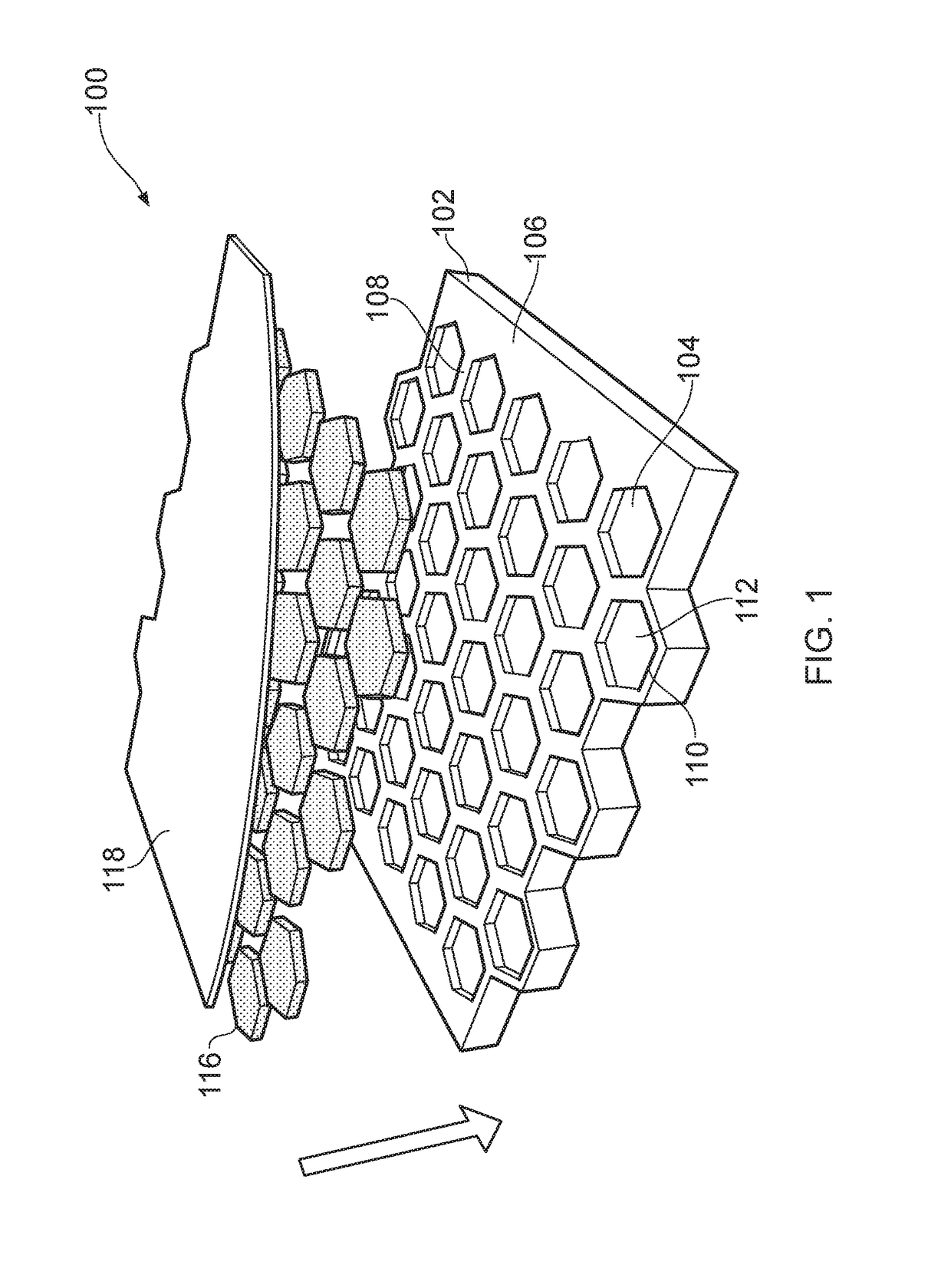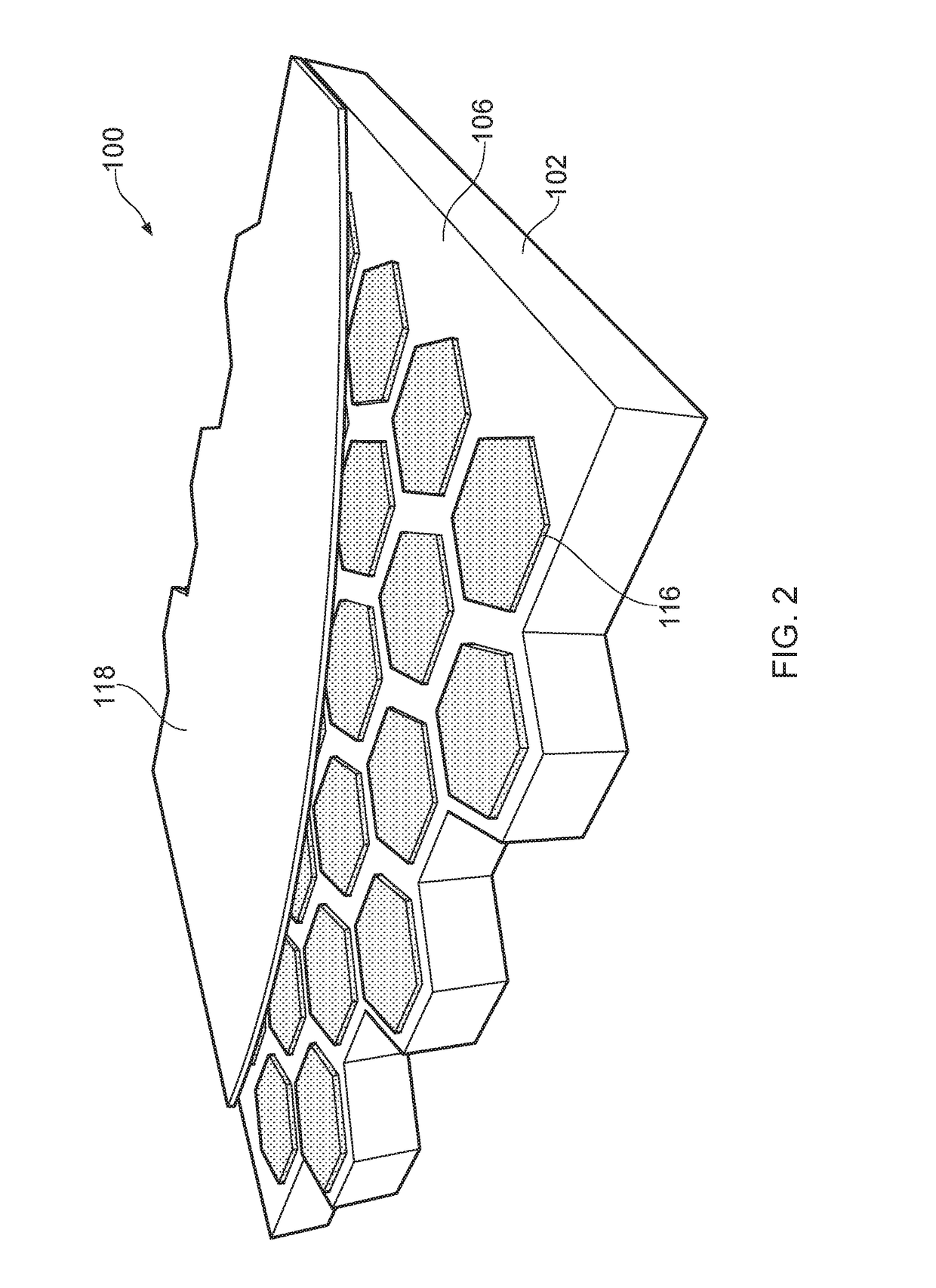Sound attenuation
a technology of attenuation and sound, applied in the direction of sound producing devices, instruments, building components, etc., can solve the problems of not wholly efficient sound absorption materials, and increased size and/or weigh
- Summary
- Abstract
- Description
- Claims
- Application Information
AI Technical Summary
Benefits of technology
Problems solved by technology
Method used
Image
Examples
Embodiment Construction
[0161]In the drawings like reference numerals refer to like parts.
[0162]FIG. 1 illustrates a sound attenuating apparatus 100 according to certain embodiments of the present invention. The apparatus includes a foam substrate layer 102. This is a 2-scale heterogeneous material. Aptly, the substrate could be another type of 2-scale heterogeneous material, such as a foam, mineral wool, glass wool, or the like. Aptly, the substrate may be a porous non-woven material. The substrate has a number of recesses 104 extending inwardly from an outer surface 106 of the substrate layer 102. The outer surface 106 is a sound receiving surface, i.e. a surface of the substrate layer that in use is arranged to face the approaching sound waves. The thickness of the substrate layer 102 is about around 20 cm but may vary depending on the technical application and sound attenuation performance required. For example, the thickness of the substrate layer 102 may be about around 1 to 100 cm, aptly about aroun...
PUM
 Login to View More
Login to View More Abstract
Description
Claims
Application Information
 Login to View More
Login to View More - R&D
- Intellectual Property
- Life Sciences
- Materials
- Tech Scout
- Unparalleled Data Quality
- Higher Quality Content
- 60% Fewer Hallucinations
Browse by: Latest US Patents, China's latest patents, Technical Efficacy Thesaurus, Application Domain, Technology Topic, Popular Technical Reports.
© 2025 PatSnap. All rights reserved.Legal|Privacy policy|Modern Slavery Act Transparency Statement|Sitemap|About US| Contact US: help@patsnap.com



